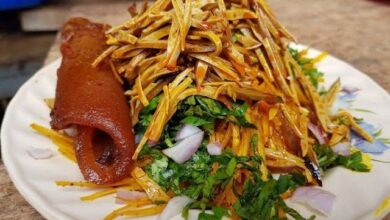
Many nations and ethnic groups all around the world have their own traditional dances to celebrate love, peace, harvest, and even wars. The Ohafia war dance is one of them. It is traditionally performed in some regions of Eastern Nigeria. It’s a live example of Igbo culture and traditions, a window into past centuries, to the times when overcoming an enemy meant life for a whole tribe. Let’s see what this interesting traditional performance is about.
How the Ohafia warriors found their present home
Ohafia is an Igbo speaking region in Abia, Nigeria. The capital of Ohafia is now located in Elu village. The area also embraces Abiriba and Nkporo cities. In the ancient times, the Ohafia people originated from Andoli but unwillingly left one night due to what they interpreted as a threat.
According to oral history, they heard the sound of the calabash and thought somebody was invading their territory. In the commotion that followed, people rushed sideways. One part of Ohafia people went towards Ngodo while others ran towards Isuochi. Then, some of them chose a direction towards Abam. They were headed by a man called Ezeama Atita and his two sons.
When the group reached Abam, one of Ezeama’s sons remained there with his wife who could not walk any longer being heavily pregnancy. The rest of the group kept on heading forward and settled down in Ugwumgbo. This is the present location where Ohafia people live. Now, Ohafia involves 26 villages with the center in Elu. There is an Eze Ogo who rules each village. When necessary, all the Eze Ogos gather for a council that decides how to rule the villages and how to solve their problems.
How the Ohafia War Dance came about
The Ohafia war dance, also known as Ikpirikpi Ogu in Igboland, is a popular dance performed in several parts of Eastern Nigeria. The dance, which has its roots in Ohafia, is performed by muscular men in commemoration of their strength in fighting and winning wars.
According to oral history, the ancestors of Ohafia were renowned to be mighty men of war who were always on the lookout for battles to take part in. The Ohafia warrior tradition, which remains one of the fundamental identities of the people, is hinged on the performance of Ikpirikpi Ogu – the practice of beheading a fallen enemy.
The human skulls taken during wars were kept as souvenirs and as a proof of courage and honour. Only those who brought home a human head could join the Ogbu-Isi society and wear an eagle’s plume which is a symbol of courage. Only men are permitted to perform the dance and beat the drums.
The Performance: Ohafia War Dancers, Oyaya and the traditions
The Ohafia tribe of Abia State were renowned fighters in ancient warfare. The dance reminiscent of celebrations after a successful battle as a victory dance to honour warriors of the tribe.
The Ohafia war dance showcases the rich cultural heritage of the Ohafia people. It also serves as a glimpse into centuries ago when winning an inter-tribal war meant a great deal to the winning tribe
The war dance is meant to celebrate some war achievements, be it individual victories over some enemies or the victory of the entire army. The group of dancers is headed by a lead dancer who carries a basket full of human skulls called Oyaya. It shows how many skulls the warriors have gathered owing to their prowess and bravery. He also carries a short cutlass and puts a small palm shoot in his mouth.
The other dancers, dressed like deadly warriors pretend to be cutting human heads, as they dance to Igbo traditional music played with the akwatankwa musical instrument. This act depicts the bravery of the Ohafia men.
What about an Ohafia War Dance Festival?
The traditional Ohafia war dance has already become a popular Igbo cultural dance from a usual war event, this process has turned into a performance that showcases the might and prowess of Ohafia people. Those who visit Igbo lands have a chance of seeing this dance performed by the ancestors of the renowned warriors and there are special occasions for the dancers to perform but once you see it, you’ll never forget it.
The true sons of the Ohafia people devotedly perform the dance of strength and prowess to the sounds of traditional instruments, the melody brings you centuries back, to the lands ruled by courage and battles, and you almost feel the rhythm of this ancient enchanting dance. It’s an experience to remember!




